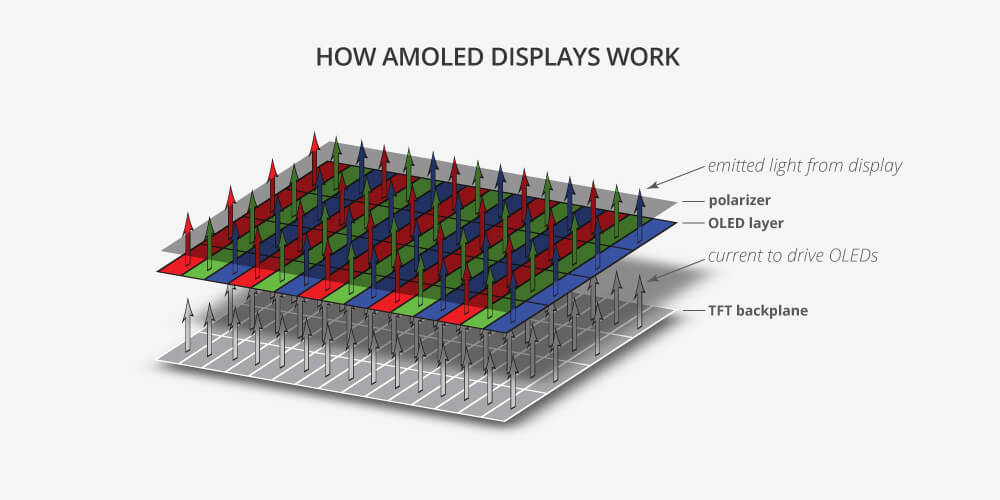It is not just the size that you should look at when deciding on a new smartphone or tablet, but also the sort of screen technology that is being used. Outside there are LCDs and AMOLEDs, each of which has its own pros and cons. Yet is one greater than the other?
Difference Between AMOLED and LCD
AMOLED
Let’s continue with displays in AMOLED. Already, many of you might already have assumed the technology here as AMOLED is in reality a version of the popular OLED display technology used in televisions. To start with, LED stands for Light Emitting Diode, and the O adds up as Organic LED here. However, AM is an abbreviation for Active Matrix and actually helps to illuminate a particular pixel if appropriate. So now we know what AMOLED actually stands for, but how does it work?
AMOLED screens are widely criticized for having poor brightness levels. All the light is produced by the pixels on an AMOLED, the black pixel is only ‘ down ‘ and needs no electricity. Thanks to naturally higher contrast the colors on AMOLED panels are usually nicer. One feature of Super AMOLED displays is that the layer sensing contact is built directly into the panel instead of being a different layer entirely. It makes S-AMOLED distinct from AMOLED
LCD
Super LCD is similar to IPS LCD, which stands for liquid crystal display in-plane flipping. It is the name given to an LCD screen, which uses panels for in-plane switching (IPS). LCD screens produce light for all pixels with a backlight, and each pixel shutter can be switched off to influence the brightness.Super LCD has been developed to solve problems with TFT LCD displays (thin-film transistor) to support a larger viewing angle and improved lighting.
So which one is better for you?
If color and battery use are an issue, AMOLED panels will outperform an LCD panel every day, bringing in most of the pros and cons for both displays. Furthermore, although AMOLED panels struggle a little with brightness levels, in our opinion it gradually catches up and is hardly noticeable e in most cases.
